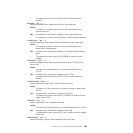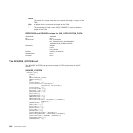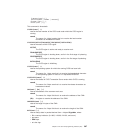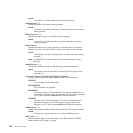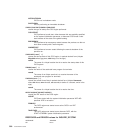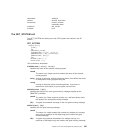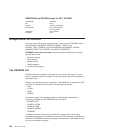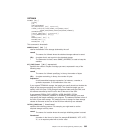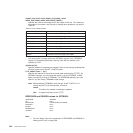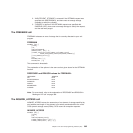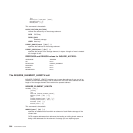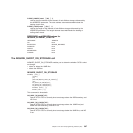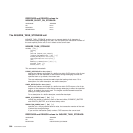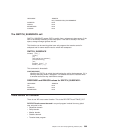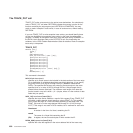GETMAIN
DFHSMMCX [CALL,]
[CLEAR,]
[IN,
FUNCTION(GETMAIN),
GET_LENGTH(name4 | (Rn) | expression),
STORAGE_CLASS(CICS|CICS24|SHARED_CICS|SHARED_CICS24|
SHARED_USER|SHARED_USER24|USER|USER24|TERMINAL),
SUSPEND(NO|YES),
[INITIAL_IMAGE(name1 | literalconst),]
[TCTTE_ADDRESS(name4 | (Ra)),]]
[OUT,
ADDRESS(name4 | (Rn) | *),
RESPONSE(name1 | *),
REASON(name1 | *)]
This command is threadsafe.
ADDRESS(name4 | (Rn) | *)
returns the address of the storage obtained by the call.
name4
The name of a fullword where the obtained storage address is saved
(Rn) A register that is set to point to the obtained storage
* The parameter list itself, name SMMC_ADDRESS, is used to keep the
address.
GET_LENGTH(name4 | (Rn) | expression)
specifies the number of bytes of storage you want, expressed in any of the
following ways:
name4
The name of a fullword specifying, in binary, the number of bytes
(Rn) A register containing, in binary, the number of bytes
expression
A valid assembler-language expression; for instance, a number, a
symbolic expression, or a combination of the two.
If you request TERMINAL storage, the length you specify should not include the
length of the storage accounting area (SAA). The maximum length you can
specify is 65 515 bytes. CICS storage management adds an 8-byte SAA, and
the address returned by the XPI call is that of the start of the SAA.
If you request CICS24, CICS, USER24, USER, SHARED_CICS24,
SHARED_CICS, SHARED_USER24, or SHARED_USER storage, you need
only specify the length needed by your program. The address returned is that of
the start of your data storage. The maximum size of storage for these storage
classes is the same as the size of the DSA from which they are allocated.
INITIAL_IMAGE(name1 | literalconst)
specifies the initializing pattern. For example, you might want to set the
acquired storage to binary zeros.
name1
The name of a location where the one-byte initializing pattern is stored
literalconst
A number in the form of a literal, for example B'00000000', X'FF', X'FC',
"0", or an equate symbol with a similar value.
Chapter 3. The user exit programming interface (XPI) 393



